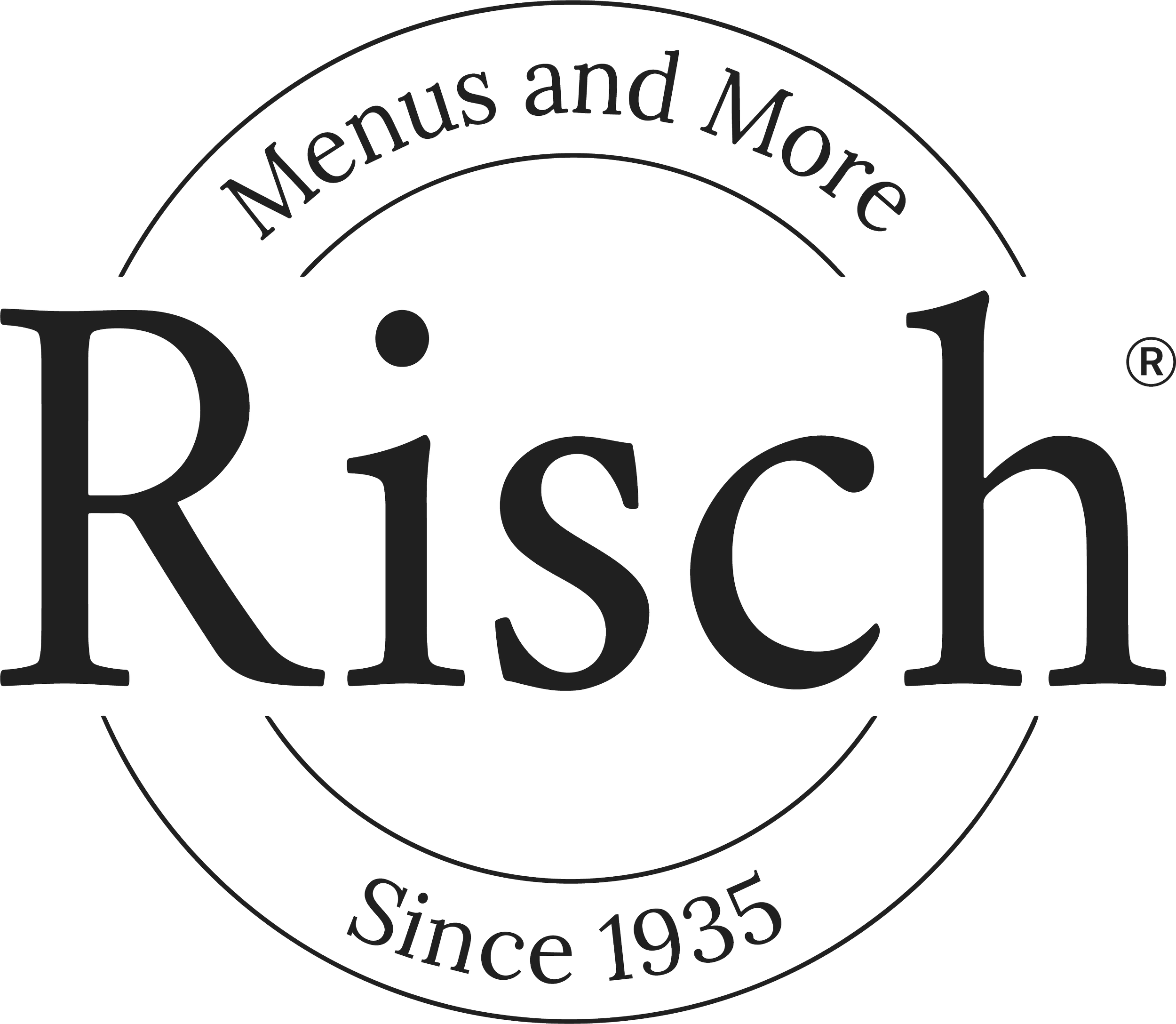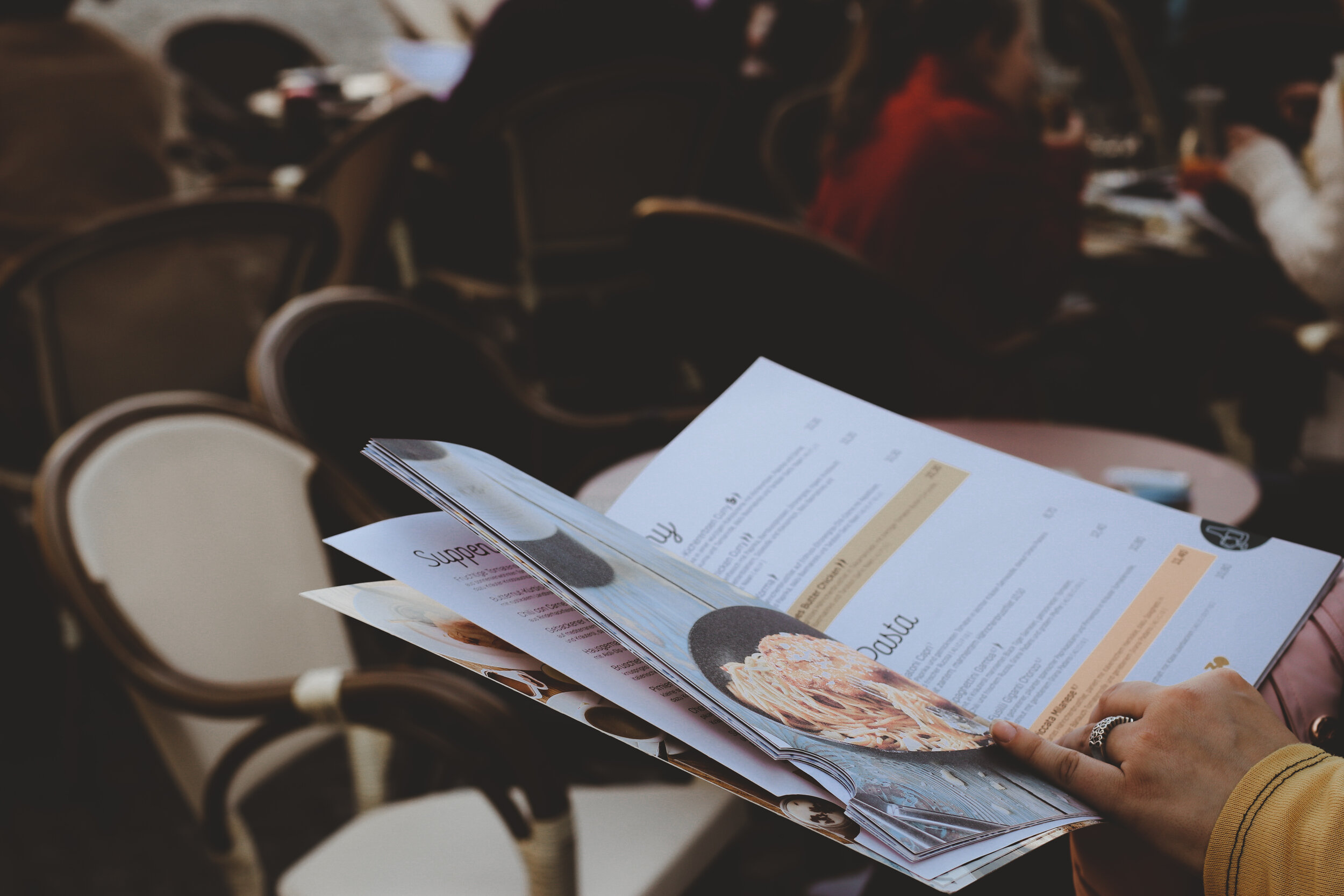The Art of Menu Design: Creating Engaging Content
1. HOW TO DESIGN YOUR MENU
Over the years, we’ve found that the most common mistake in menu design is that too many of them seem “undone”. They are often flat and inconsistent and are oversaturated or undersaturated with text and images. Sometimes a menu is a flat color with text, which is alright when grabbing dinner from the local Chinese take-out.
Your menu should complement your brand, establishment, and personality.
Colors, illustrations, photos, and borders can give the eyes a rest from all the wording and break up monotonous text patterns. While on the subject of images and text, an owner of a restaurant will often want to provide a large variety of choices for their patrons but end up overstuffing their menu with entrees that don’t fit their business scheme (i.e. a burger joint featuring an Italian pasta dish). Adding in one-hundred menu items so that everyone’s distinct food cravings can be met is a good idea, in theory. But in practice, this will skyrocket your produce bills and makes food freshness plummet. Sticking with a set idea of foods will give your menu breathing space, allowing customers to look at your menu with a smile rather than squinting eyes.
It can be intimidating to approach menu design for the first time, almost like buying a first car. The constantly changing trends can be overwhelming, but there is one secret that many people look past: research! It’s rare to buy a car without reading up on it first, so why do the same for your menu?
Examine the current trends for your restaurant theme and collect design references you find attractive and striking. Always have something to present to your designer - the more information you provide, the more closely we can match your vision.
2. HOW TO WRITE CONTENT FOR YOUR MENU
Now when it comes to writing the descriptions for your menu, keep two things in mind.
First, what is your typical audience?
If your business caters to tie and jacket only, stay away from exaggerated adjectives, slang or exclamation points. Instead of using the following statement: “This HUGE Steak is Pure Mouthwaterin’ Goodness!”, describe it with finesse: “10 oz of Succulent Prime USDA Beef - Smoked & Braised Until Tender”. Keep in mind there are numerous ways to elevate your descriptions. Rather than saying a dish is “great,” label it “superb.” Tasty? Try delectable. The possibilities are endless when it comes to synonyms.
Second, you never know when the market will change.
One month the price for chicken wings could be a steal, and the next, it could jump up over 110%. Keeping itemized values out of your menu will help when this inevitably happens, saving you from having to sharpie out a number on your beautiful menu! Instead of writing that 8 Jumbo Wings come with an appetizer, describing them is more than enough. If there is a change and the customer only gets 5 wings instead, they may feel that they were robbed. As social media is always within arm’s length, this discrepancy could cause great harm to your business and brand.
Want more tips on how to design, write or create your menu? Join our mailing list below for tips, freebies, recipes and so much more.



